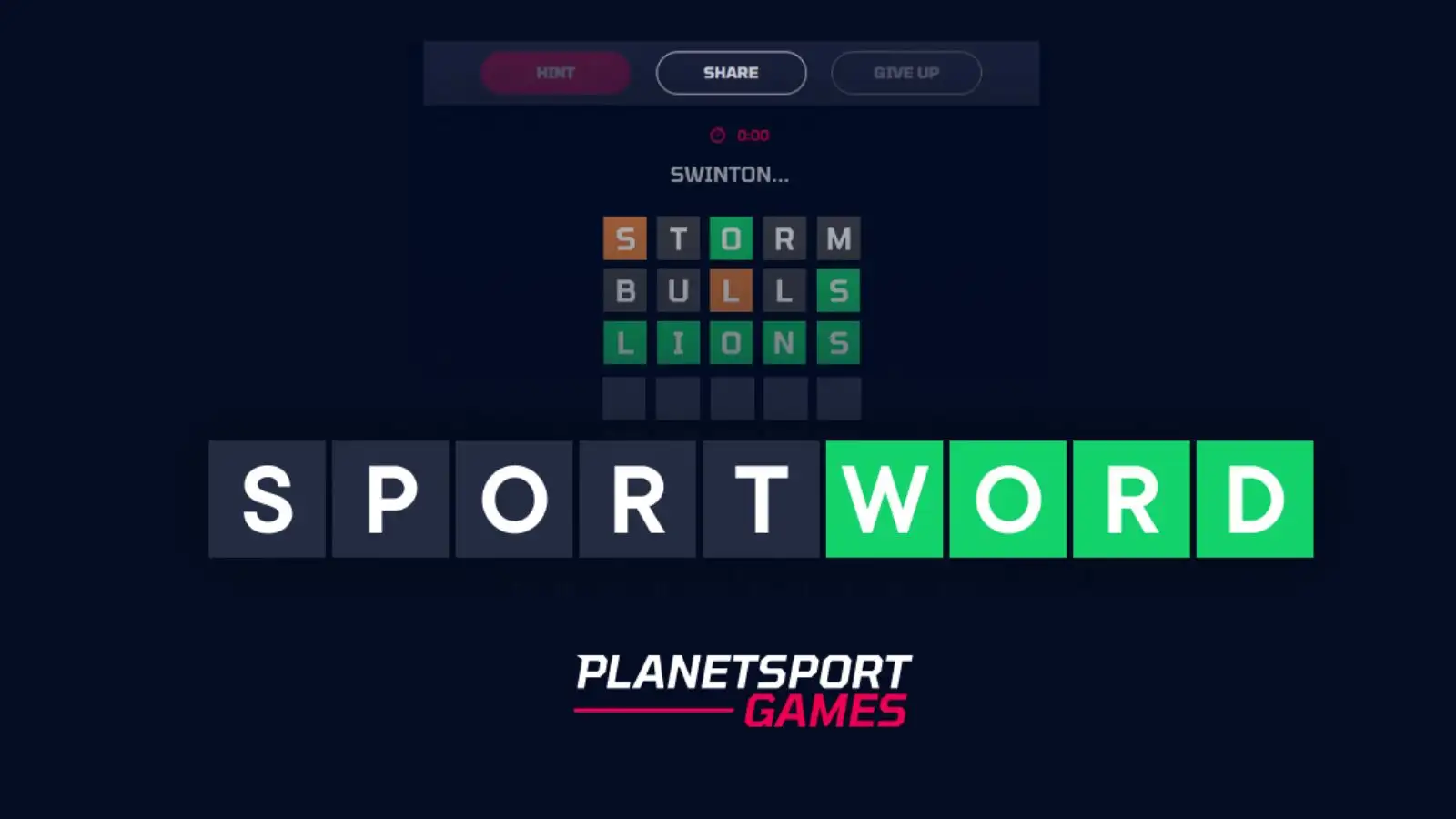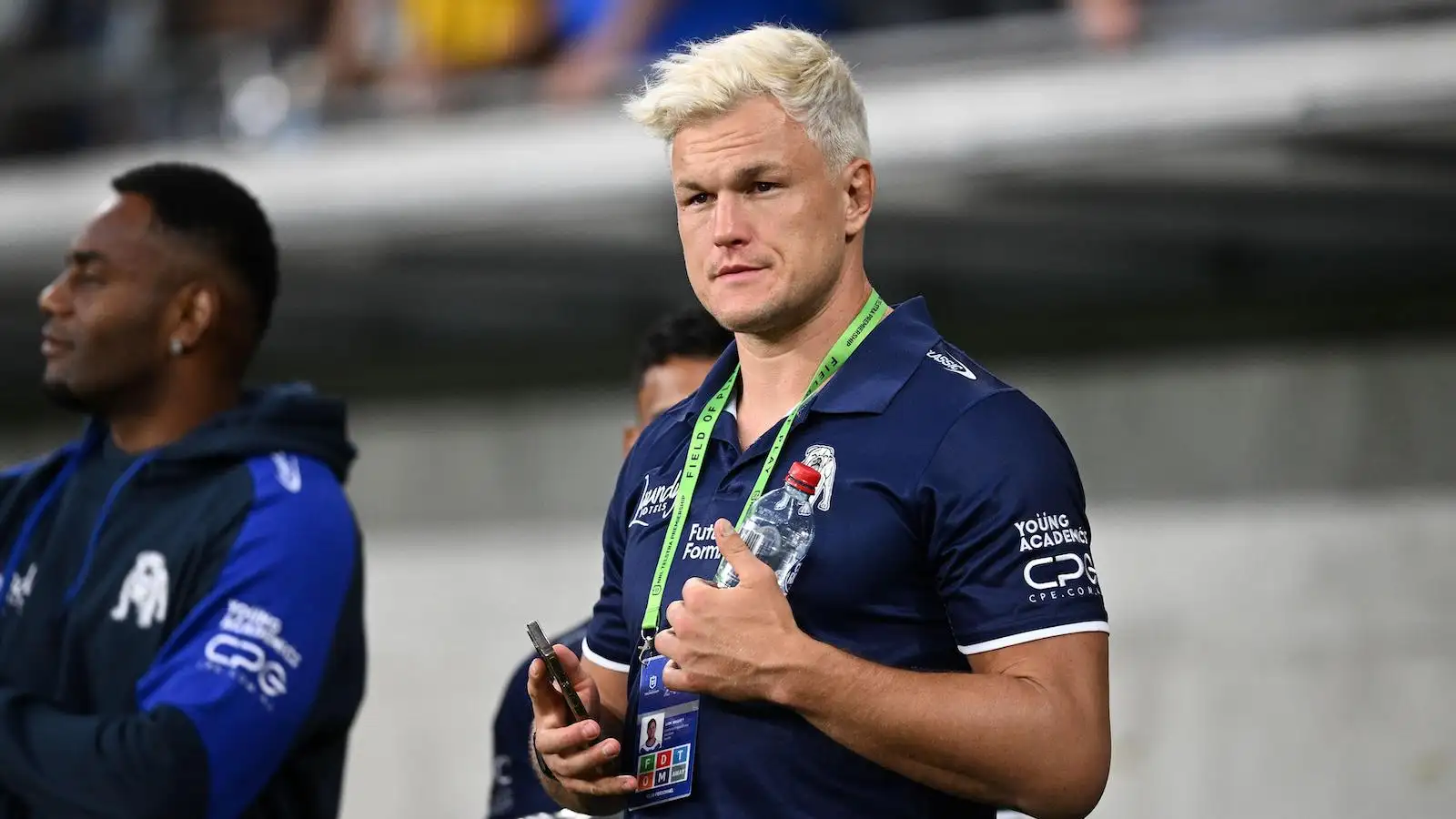Leeds Rhinos and Manly Sea Eagles are rugby league’s weirdos: and the stats prove it

Jack Sinfield is congratulated by his Leeds Rhinos team-mates having scored a try in their Round 10 victory against London Broncos
If you can’t win, at least be good to watch, right?
It’s something that the people of Leeds might be on board with given the success of Marcelo Bielsa in the city.
A count of the murals that remain of the Argentine tactical genius following his departure over two years ago would suggest that at least some level of sporting aestheticism is to be expected in the heart of West Yorkshire.
Rohan Smith isn’t Bielsa – though his father is as close as rugby league has to an equivalent – but his style of rugby league is almost as iconoclastic. It’s impossible to watch the Rhinos this year without noticing that they are not by any stretch a normal team.
Plenty of people on Sydney’s Northern Beaches know who Bielsa is too – it’s the home of one of the biggest South American communities in Australia – but not many of them are regulars at Brookvale Oval.
Yet the Manly Sea Eagles are also aesthetes and under coach Anthony Seibold could well be seen as the best team to watch in the NRL. Being interesting is very much part of Manly’s plan.
It became obvious late in 2023, when fullback Reuben Garrick decided to bring back the 1980s with a kicking duel as part of a gameplan seemingly designed to weird out the unbeatable Penrith Panthers, and post-match, Seibold outright said that his side had to do something different to even stand a chance.
That streak was there already well before, and by the end of the year, despite plenty of injuries that ensured post-season footy was off the table, Seibold’s style was well embedded. Now in 2024, Manly remain outliers. They attack with abandon, rack up points and give up leads just as readily.
They’ve knocked off the Panthers, Storm and Roosters – nobody else can claim that – but also lost to bang average Dragons and Parramatta sides as well as throwing away horrendous leads to both Canberra and the Dolphins.
Both Leeds and Manly are pushing the boundaries of what rugby league can look like, but in vastly differing ways. Where one embraces structure to the maximum, the other appears to have totally abandoned it.
READ NEXT: Hull FC recruitment report: retention plans, 2025 targets and squad depth scrutinised
Are the Sea Eagles over-choreographed nonsense that will eventually melt the minds of overburdened players? Are the Rhinos making it up as they go along, or does it just look like it?
Love Rugby League has thrown the stats from every team in the NRL and Super League into its spreadsheet, run the basic data and then the advanced analytics and come up with a few pointers.
Starting in the Super League, Leeds are, statistically speaking, a bunch of weirdos. They don’t get much ball, and when they do get it, they’re quite profligate with it.
Their total sets are low and their number of incomplete sets is high, suggesting that they don’t really execute what they’re trying to do with the ball. What they are trying to do is even less clear..
They have an incredibly low pass-per-run ratio (PPR), which is exactly what it sounds like. Their hit up percentage is also very low, meaning they’re playing less one out than almost everyone else in the sample.

But: their numbers for shifts per game are very low, as is their Off Ball Value (OBV), which measures combined push supports and decoys.
That’s a numbers bomb and a half there, but in real terms, it means that they don’t pass much, but also don’t take hit ups, don’t shift the ball but also don’t run any deception.
If Leeds’ attack looks like an unstructured morass, then it’s probably because it is. They’ve also got the joint lowest completion rate (CR%) along with the Cowboys, Brisbane and Souths from the NRL and Castleford from the Super League.
Now, anyone who knows about those Australian sides could tell you that it isn’t necessarily the worst club to be in: North Queensland are middling, but certainly can attack while the Broncos are one of the absolute elite teams in the world.
Souths are a bonfire in 2024, but were top of the league 12 months ago with a CR% not much different to now. Castleford, in fairness, have few mitigating factors: they just drop the ball a lot.

Completion rates, no matter how frequently they get mentioned by broadcasters, don’t correlate to winning very well at all and it is only beneath a floor of about 73% that it really starts to hamper a team.
It’s more that rugby league is about risk and reward, so if you’re dropping the footy at the right part of the set or in the pursuit of something – or if you have an above average defence that can protect your errors – then it really doesn’t matter.
Leeds, though, are dropping the ball but not doing anything with it. The lack of shifts and passes suggests they aren’t going around, and the lack of hit-ups and supports suggests they aren’t going through. What are they doing?
In almost every graph that has the Rhinos at the bottom, Manly are at the top. OBV? Top. Shifts? Top. PPR? Top. Hit up percentage? Ok, second, to the Broncos.
Watch them for even a half and it’s clear that they’re intent on getting the ball wide at the first opportunity, as well they might given the huge speed in the outside backs when Tolu Koula and Jason Saab (likely on the podium of the rugby league Olympics’ 100m race) are firing, not to mention Tom Trbojevic.
But it’s not just the obvious: Jake Trbojevic and Nathan Brown are both ball-playing forwards and they regularly have them on the field at the same time, constantly shifting the point of attack to further from the ruck.
Love Rugby League has been in their Brookvale gym and, in yard-high writing on the walls, are the phrases’ SPARK TRANSITION’ and ‘LIVE ATTACK’.
Nobody could accuse this side of not having a plan, and plenty have suggested that they have too much of one.
If you play at 100mph and run constant push supports and decoys, attack can suddenly get as tiring as defence, not to mention the mental fatigue of chucking constant offence on almost every play.
It’ll help you batter down even the sturdiest defence – to wit: 26+ points against the Panthers and Storm – but when the time comes for you to tackle, there mightn’t be that much left. Manly’s line speed leaves a lot to be desired.
With due apologies for a second football reference, there’s a debate in the round ball game that might go a long way to explaining what we’re seeing here.
On one side is what is known as ‘positionalism’, the ultra-coached, highly-organised style of football that will be well known to Premier League fans who have seen a game stranged by Pep Guardiola’s Manchester City. Aussies will know it too from Ange Postecoglou, also a high priest of position.
On the other is ‘relationism’, the more free-wheeling style associated with Carlo Ancelotti’s multiple Champions League-winning Real Madrid, where you get good players and trust them to build relationships with each other, using the fact that they’re making it up as a plus point.
Where one emphasises controllable, repeatable actions, the other prioritises unpredictability and improvisation. There’s no right or wrong answer and no team is 100% one or the other, but the ideological divide is clearly there.
We don’t couch rugby league debates in these terms, but with Leeds and Manly, it might be the best way to do it. Rohan Smith clearly intends for his side to improvise, trusting that they can break sides down through creativity.
To reiterate: it’s not that they don’t have a plan, it’s that the plan is to be heads-up, off-the-cuff, whatever you want to call it. There’s a reason Leeds are having their own try of the season competition because when it works, it’s spectacular.
The question, inevitably, is about how sustainable it is. Improvisation, as anyone who has heard jazz will know, is good when it’s good and terrible when it’s not.
You might win 12 out of 15, as Leeds did to make an unlikely Grand Final when Smith first arrived, or you might fall flat on your face.
Manly are clearly trying the opposite, with rehearsed patterns everywhere, but that brings its own problems, notably that it overloads players with information and is thus very hard to enact.
The patterns themselves are sustainable, but only to the extent of the ability of the players to perform them.
READ NEXT: 5 times teams rested players before the Challenge Cup final and what happened next
At Brisbane, this collapsed as Brodie Croft, Anthony Milford and co wilted under the load, and the hope will be that a better playmaking duo in Daly Cherry-Evans and Luke Brooks will be able to parse the playbook more successfully.
You’ll notice, too, that we’re only talking on one side of the ball. Regular watchers of Leeds will know that their line speed is nonexistent, which is also a decision of the coach, and one that – for now at least – does not appear to be paying off.
It isn’t that Smith’s style of rugby can’t work, but it is inherently streaky and, at a club like Leeds, the pressure is never going to be far away.
With such a loose way of working, when it goes badly it will look like the coach is doing nothing at all and when it works, it’ll often look like the players and not the coach responsible.
Manly have the opposite issue, with Seibold able to claim success when things are going well but also ripe to be blamed when they aren’t, as his fingerprints are all over every moment of every game.
Their structured style has proven very difficult to maintain over 80 minutes, with several leads thrown away, and very hard to adapt to game state as required. All action attack is not something easily switched off in rugby league.
Leeds are in the midst of a horror run and Manly only just out the other side of one, and both coaches have been under pressure.
Smith is far from flavour of the month with supporters and Seibold’s recent contract extension talks ended with the coach departing the meeting early.
With competitions on both sides of the world hitting their middle point, it will be fascinating to see whether club bosses stick or twist on their coaches, both of whom are highly unlikely to change their formula now.
Whatever happens, Leeds and Manly will continue to be, at the very least, interesting.
READ NEXT: The fascinating data trends behind Matt Moylan’s upturn in form at Leigh Leopards



